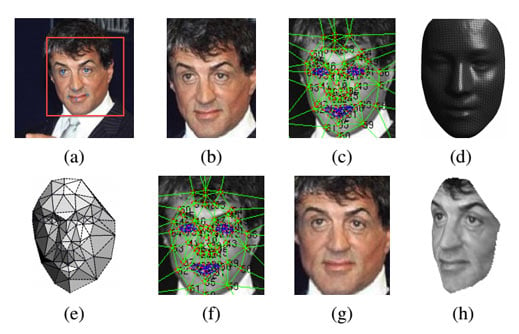Facebook’s new AI research group reports a major improvement in face-processing software.
Questioned no matter if a couple of not really acquainted images connected with people demonstrate the identical man or women, a people are certain to get it proper ninety seven. 53 % of times. Completely new application manufactured by scientists from Facebook can easily report ninety seven. 25 percent about the same difficult task, no matter versions with lighting effects or even whether or not the man or women from the image is specifically dealing with this digital camera.
That’s an important move forward over past face-matching application, and it illustrates the energy of your completely new way of artificial cleverness known as heavy understanding, which Facebook as well as opposition possess bet intensely with in the past season (see “Deep Learning”). This subject of AI entails application which employs cpa networks connected with simulated neurons to master to acknowledge styles with copious amounts connected with data.

“You typically don’t make sure type of advancement, ” says Yaniv Taigman, part connected with Facebook’s AI crew, an investigation class designed recently to be able to examine the way heavy understanding may also help the corporation (see “Facebook Launches Sophisticated AI Effort”). “We strongly tactic man effectiveness, ” says Taigman of the completely new application. He / she information that this malfunction pace may be reduced by means of more than a 1 fourth relative to sooner application that may consider about the same task.
Go convert: DeepFace uses a 3-D design to be able to turn people, essentially, to experience this digital camera. Image (a) indicates the original graphic, and also (g) indicates the ultimate, repaired version.
 Facebook’s completely new application, known as DeepFace, does what scientists call face confirmation (it recognizes which a couple of pictures demonstrate the identical face), not necessarily face acknowledgement (putting a name to a face). Yet some of the actual strategies could possibly be placed on which dilemma, says Taigman, and also may as a result enhance Facebook’s reliability from hinting that with whom end users should tag within a recently submitted picture.
Facebook’s completely new application, known as DeepFace, does what scientists call face confirmation (it recognizes which a couple of pictures demonstrate the identical face), not necessarily face acknowledgement (putting a name to a face). Yet some of the actual strategies could possibly be placed on which dilemma, says Taigman, and also may as a result enhance Facebook’s reliability from hinting that with whom end users should tag within a recently submitted picture.However, DeepFace is always simply an investigation task for the moment. Facebook unveiled an investigation document on the task yesterday, as well as the scientists will present the project with the IEEE Convention with Laptop or computer Imaginative and prescient vision and also Structure Identification with August. “We are generally posting our results to acquire feedback through the exploration neighborhood, ” says Taigman, that formulated DeepFace in addition to Facebook friends Ming Yang and also Marc’Aurelio Ranzato and also Tel Aviv School mentor Lior Hair.
DeepFace procedures pictures connected with people with a couple of steps. Primary it corrects this angle of your experience so that the man or women from the image people ahead, employing a 3-D style of an “average” forward-looking experience. Then a heavy understanding also comes in being a simulated sensory network breaks down to a numerical account of the reoriented experience. In the event DeepFace pops up along with similar enough information through a couple of distinct pictures, it makes a decision they should demonstrate the identical experience.
The actual effectiveness of the last application ended up being tried in opposition to a normal data fixed which scientists make use of to be able to benchmark face-processing application, which has been employed to determine the way individuals cost from corresponding people.
Neeraj Kumar, a examiner with the School connected with California that has done experience confirmation and also acknowledgement, says which Facebook’s final results demonstrate the way acquiring enough data to be able to supply right into a big sensory network allows pertaining to significant changes with machine-learning application. “I’d bet large amounts of this acquire the following arises from what heavy understanding generally offers: to be able to leveraging a large amount connected with outdoors data within a much higher-capacity understanding design, ” this individual says.
The actual deep-learning section of DeepFace consists of seven cellular levels connected with easy simulated neurons, with an increase of than 120 zillion internet connections among these people. To train which network, Facebook’s scientists drawn on a smaller slice connected with data from other company’s hoard connected with individual images—four zillion images connected with people belonging to virtually some, 000 men and women. “Since that they get access to a lot of data on this style, they are able to successfully prepare a high-capacity design, ” says Kumar.
No comments:
Post a Comment